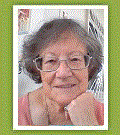| |
Have you read Barry's Tips? Then you know already that Bobbyuka is my dear grandmother.
My dear boss (that lady who spends most of her time on the computer writing children’s books and updating my website)
says that Bobbyuka has always been a very educated pet dog. I feel she is then the right fellow to give you some tips on how to train your four-legged friend.
Follow Bobbyuka’s tips and your well-behaved pet dog will surprise everybody.
YOUR DOG'S OR PUPPY'S EDUCATION TRAINING
The education of your dog or puppy should always depend on your dog breed, because a police dog is not expected to learn the same commands as a guide dog.
A baker does not learn how to lay bricks; and the bricklayer does not need to make bread rise to perform his job, isn't it?
But there are some basic rules that every dog breed shares: dogs love going for a walk with their owners. And when walking your pet dog, the best is to take him on a leash.
The sooner you start training your puppy the better, because he will hate the leash, as I did myself. Training your dog can be very challenging for both of you!
Walking on a leash: the first thing to do is to get your puppy used to the dog collar. The next step will be to put him on a short leash and to take him for a walk.
If you are left-handed like my dear "boss" Eduardo, you hold the leash with your right hand and make him walk on your right side. If you are right-handed like my dear "boss" Gustavo, you do the opposite.
But before leaving the house, make him sit, say his name immediately followed by the command "heel!", and step off with your left leg if he is at your left side (or with your right leg if he is sitting at your right side).
Moving your leg is the body signal to your dog that you are leaving.
You should start off slowly, and in case your dog pulls the leash in any direction, then call him by saying the command "heel" and simultaneously pull the leash back in one steady movement.
When your dog understands what you want him to do and stay on your side, praise him.
As it happens with children, your puppy will soon be tired. You may consider walking him for short periods, one or two times a day.
You'll notice that he learns fast, and as he grows, you may also increase the training sessions and replace the bucket collar by a training collar.
Obedience: the first rule is to call him by his name. Talk to him gently and keep an eye on his reactions. Your dog or puppy will evaluate your love for him according to the patience, kindness and justice you show towards him.
He will then accept that you correct him immediately when he does something wrong, but do not hurt him, because his best wish is to please you. His obedience should be an expression of love to you not fear.
Never punish your dog with your hand: the owner's hand is seen as a token of affection; it should not be feared. The owner's hand is a means of caressing, not an instrument of punishment!
Whenever your dog or puppy makes a mistake or disobeys, let fall an object (always the same), like a bundle of keys or a metal chain; after some time he will associate this unpleasant noise to the mistake or disobedience and will stop doing it.
Other training tips: If when walking your dog he usually looks for rubbish or food in the dustbins he finds, the best way to finish with this bad habit is to buy a few mousetraps and put them in the dustbin inside your home, under a layer of paper sheets.
The mousetraps will not hurt him, but they will frighten him off. And your puppy or dog will soon stop this queer behaviour... inside or outside.
If your dog has as well the irritating habit of biting the legs of the chairs or other pieces of furniture, fill a spray container with vinegar diluted in water, and whenever you see him doing so spray him with the liquid.
He will lose that bad habit without a backward glance! Dogs hate the smell of vinegar, believe me!
To teach your dog not to accept food from strangers (which will prevent him from occasionally being poisoned), ask somebody you know to give him a small piece (ball) of chopped meat seasoned with vinegar, mustard or pepper, flavouring ingredients he hates.
Repeat this action several times, and soon you'll see that he associates this unpleasant experience to foreign people and will only accept food from you or from any other person, like your parents, whom you made him trust.
And as for any dog a nice bone is a very special treat, do not forget to please him now and then.
Be sure though about the kind of bone you buy, because rabbit and fowl bones are very dangerous to dogs.
|
|







